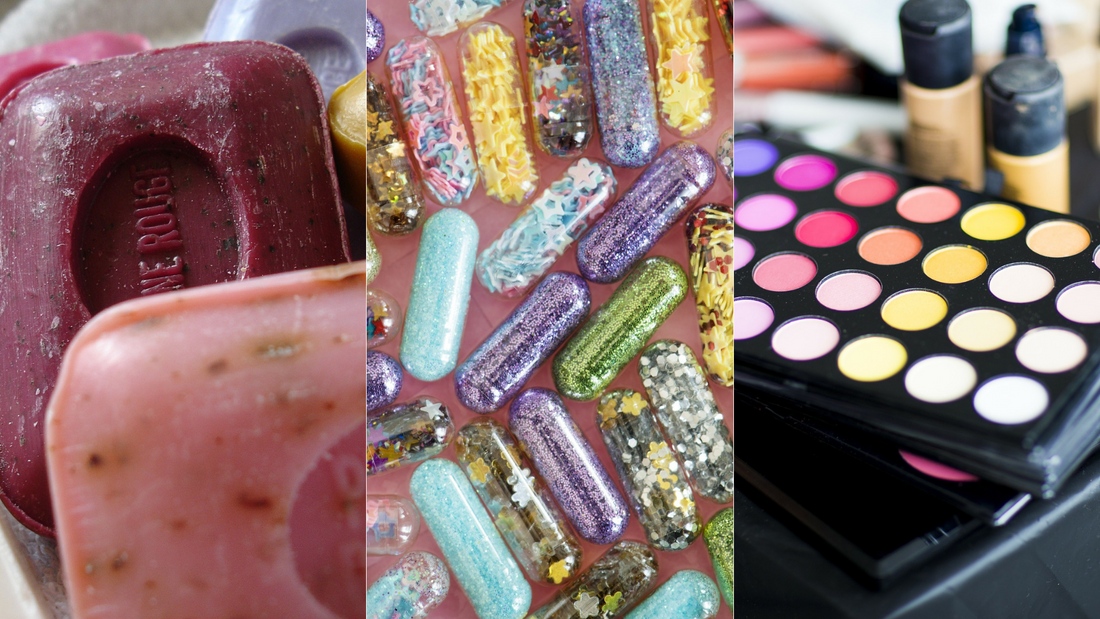A Quick Note: Since Perry Creek is located in the United States, we’re going to discuss your skin care products with respect to US regulations. The rules outside the US are quite different and vary from country to country. I recommend that you educate yourself about your local regulations if you are outside the US.
Should you care about your local regulations? The government has your back, right?
Maybe, but all of these regulations are hard to enforce with so many handcrafted skin care makers. It’s my job, as one of those handcrafters, to understand and follow all the regulations…in their complicated and tiniest details. After working as a Regulatory Affairs Specialist at Big Food Company, I have a unique perspective compared to most makers, and I want to take a few minutes to help you understand some basic points of the US regulations. After all, you work hard for your money and want to be sure you spend it wisely!
Within the US, your skin care product typically falls into one of three categories. It’s either a soap, a cosmetic, or a drug. It could also be a cosmetic and a drug (and must meet both requirements), but more on that later.
Let's take a look at soap first.

To be 'soap', the product must be made up of the alkali salts of fatty acids. This is a very chemist way of saying, "soap is made of oils, butters, or other fats mixed with something like lye (sodium hydroxide)". To truly be called 'soap', the product can’t contain synthetic detergents or surfactants. It’s cleaning power comes only from the alkali salts that result from the chemical reaction between fats and lye.
Soap must also be labeled, sold, and represented as 'soap'. The label can’t carry any claims to cure, treat, or prevent anything, and the label can't say anything about improving your appearance, smell, or life. These products are just soap and are regulated by the Consumer Product Safety Commission (CPSC).
That Big Box Store Beauty Bar isn’t soap. That Irish Green Bar of Smells Amazingness? It’s also not soap. But that’s a discussion for another post.
So, soap is kind of boring, right? The regulations are definitely a marketing challenge for the handcrafted soap maker. We choose our ingredients based on the function they will impart to the soap. We can blend oils to get a specific type of lather (we can make large bubbles or small fluffy bubbles), we choose ingredients to get a specific bar hardness (from super hard to super soft), and each oil lends its own cleansing properties to the bar. We can also use all kinds of different additives from clays to oatmeal and even different food products (goat’s milk and avocados, for example). These additives all have different properties that affect the soap user’s experience.
Regardless of our ingredient choices, we can only say, “Hi there! Want to buy some soap?”.
Soap labeled as…well…just soap, falls into the Wild Wild West of Products. You can use almost anything as an ingredient, and you don’t have to list any of the ingredients. Although a lot of handcrafted soap makers do list their ingredients – because it’s what we would want. We spend a lot of time and effort crafting just the right product, and we want you to know what goes into your skin care so you can be delighted by our products.
Of course, the CPSC requires that all ingredients must be safe for use, and there are some rules around labeling and potential warning statements depending on who your soap is recommended for ('not for use by children', for example). But, at the end of the day, as long as the product is made up of alkali salts of fatty acids and labeled as 'soap' with no claims that the product will make you beautiful or cure your illness, a soap maker can use just about anything.
Which can be good – we can make really beautiful soaps with lots of beneficial ingredients. Or it can be bad – we can use essential oils as fragrances, and you may have a medical condition that would contraindicate the use of this essential oil. I often see essential oils that are considered “photo-toxic” used in skin balms and lip balms with no information to the consumer. Skin balms and lip balms? Those are cosmetics.

If you see a product label or social media post that claims the product will make you beautiful, smell nice, or otherwise improve your appearance, it is now a cosmetic and falls under FDA regulations. For example, soaps that claim to moisturize your skin are cosmetics according to the FDA. Lip balms and skin balms are also cosmetics.
The FDA has a long list of criteria that must be included on the product label (right down to the font size used and the location of information on the package). All ingredients must be considered safe for use and must be listed on the label. There is also a limit to what ingredients can be used.
This is where things get a little bit tricky for handmade makers who want to use natural ingredients to color their products and also want to say something like “moisturizing” on the label. The FDA does not currently recognize a lot of the natural colorants that have been used by soap makers for years. This doesn’t mean these ingredients aren’t safe for use.
In my past life at Big Food Company, I worked on several projects trying to get new technologies and new ingredients approved through the FDA. While the food regulations are different from the cosmetic regulations, the process to validate new ingredients is quite similar. It takes a lot of time and money to prove that something is safe. In most cases, if an ingredient isn’t on the “allowed for use” list, it’s just likely that someone hasn’t approached FDA to add it to the list. In most cases, it’s not that these ingredients aren’t safe, they just aren’t authorized for use in cosmetics. Regardless of the reason, handmade makers that claim their products improve your appearance can’t use a lot of natural ingredients for coloring.
If you are purchasing a product that says it will improve your appearance, look at the ingredient list and do your homework to understand not only the ingredients, but the claims the creator is making. Misbranded cosmetics are a bit less concerning than misbranded drugs. Afterall, we’re talking about appearance here, not curing or treating medical conditions. But it’s still important to understand if you want to buy what the creator is selling – will it give you the intended cosmetic benefit or will you be disappointed in that expensive bar of soap.
Speaking of treating medical conditions - let's talk about drug claims and your skincare products.

You may see a skin care label that claims to cure, treat, or prevent a disease or condition. These are drugs and fall under the FDA drug regulations. That soap that will cure your eczema? It’s a drug. The skin lotion that claims to moisturize and also provide protection from the sun? It’s a cosmetic and a drug.
Look at any label on a drug in your medicine cabinet. You’ll see the ingredients divided into “active ingredients” (those that cure, treat, or prevent) and “inactive ingredients’ (everything else). Makers that use drug claims must meet the drug labeling requirements. They must also have science-based information (research studies, for example) that indicate that the active ingredients used are safe (at the levels used in the product), and that these ingredients will be effective at the dose available in the product. These are just bare minimum requirements, and a lot of time and money can go into not only creating these products, but also substantiating the label claims and getting regulatory approval.
If you are purchasing a skin care product to treat or cure something (as an acne treatment, for example), making sure the product is labeled like a drug assures you that the creator has done their homework. The active ingredients are backed by scientific support that shows they provide the desired benefit. It also gives you confidence that the creator is using those ingredients in appropriate concentrations (more isn’t always better).
Now I’m not saying that only ingredients approved by a regulatory body can give therapeutic benefit. I’m just saying that you should know what you’re getting yourself into before spending a zillion dollars on that “cure all” that may not really cure anything.
If the product claims to cure / prevent / treat but isn’t labeled as a drug – ask a lot of questions and do some homework to educate yourself.

I hope this information will help you choose the best product your money can buy.
Do you have questions about skin care labeling? I’m sure you’re not the only one with that question. Drop a note in the comments below and let’s connect!


2 comments
Hello, John! Thank you for your comment! You are correct – any kind of ‘balm’ that is intended to cure or treat a condition (soothe chapped lips or repair dry skin, for example) would fall under FDA drug regulations.
As always, the key is to understand the intended use – if the product is meant to cure or treat, it’s regulated like a drug. If the intent is to make you or your skin more beautiful, it is a cosmetic.
You’re probably aware that the regulations are changing in the US, and this blog post will surely need an update as soon as the FDA publishes their guidance document.
Thanks again for your comment!
Hello,
Under current FDA rules the word “balm” is a drug claim. Therefore lip balms and skin balms are considered OTC drugs and require facility and product registration. May want to clarify this in the article.